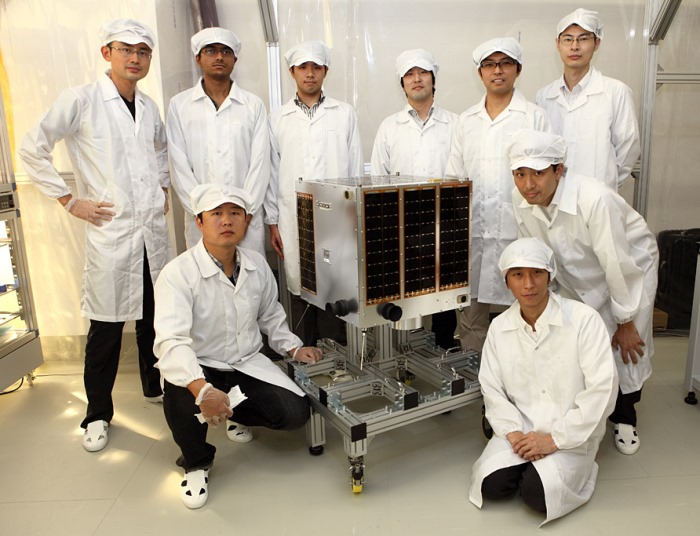Hodoyoshi-1
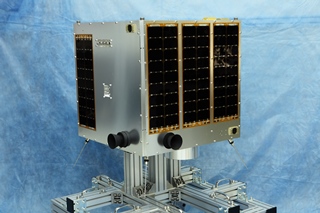
Hodoyoshi-1 is a microsatellite developed by AxelSpace and the University of Tokyo. It is the third Hodoyoshi satellite to launch following in the footsteps of Hodoyoshi 3 and 4 that launched earlier in 2014.
The project aims to change the development of satellites to introduce cost-effective systems that can be used in a variety of applications with one primary focus being Earth-observations using miniaturized optical payloads. Hodoyoshi can be translated as “Reasonably Reliable Systems.”
The Hodoyoshi-1 satellite is 50.3 by 52.4 by 52.4 centimeters in size using an aluminum structure with internal and external panels. The satellite weighs 60 Kilograms and is equipped with body mounted solar cells that deliver around 50 Watts of electrical power that is distributed using a 28V and a 5V power bus. Power is stored in a Li-Ion battery.
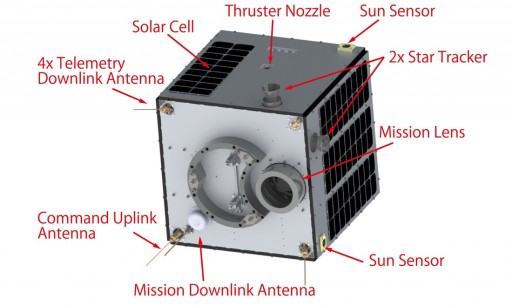
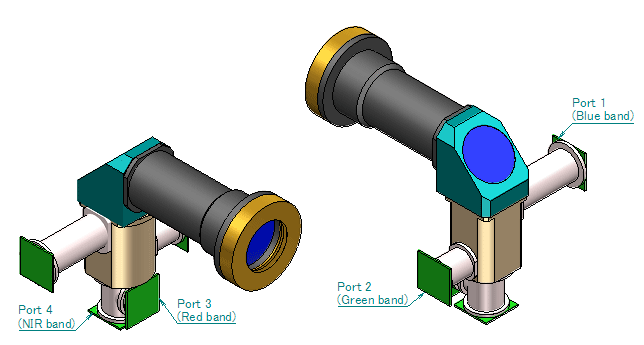
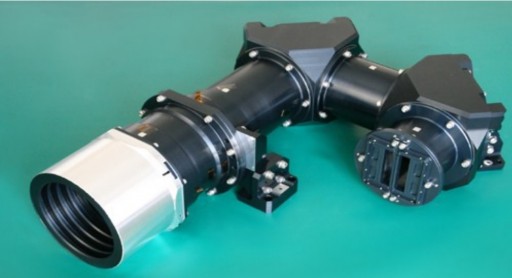
The satellite is three-axis stabilized using star trackers, an inertial measurement unit and a reaction wheel assembly to provide very accurate Earth pointing capabilities with an attitude error of under 0.1 degrees.
Orbit determination is provided by a GPS sensor. Normally, the satellite will be in a nadir-pointing attitude, facing its camera and antennas toward Earth.
The satellite uses a Field Programmable Gate Array as main processing unit. Telemetry downlink and command uplink is accomplished via an S-Band system with an uplink rate of 4kbps and a downlink rate of 4 to 64kbps.
Mission data is downlinked via an X-Band system achieving data rates of up to 20 Mbps. The Hodoyoshi-1 satellite is outfitted with a Hydrogen Peroxide propulsion system for orbital maneuvers and orbit maintenance.
The primary payload of Hodoyoshi-1 is an optical imaging system that uses a pushbroom (line scanning) design employing a refractive telescope and lenses that create a wide field of view to be able to cover a wide ground swath of 27.8 Kilometers when pointing nadir.
The imager covers four spectral bands, the conventional RGB bands to create full-color Earth imagery plus a near infrared channel – Blue (450-520nm), Green (520-600nm), Red (630-690nm) and Near-Infrared (780-890nm).
Hodoyoshi-1 will achieve ground resolutions of 6.7 meters, its imagery being used for agriculture monitoring, forestry, fishing, mapping, disaster monitoring and other purposes. The maximum strip-length of imagery acquired by Hodoyoshi is 179 Kilometers.
